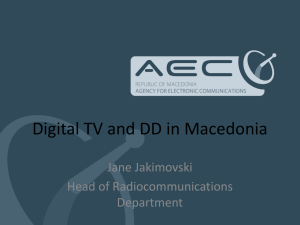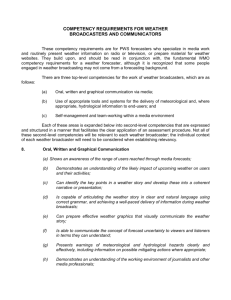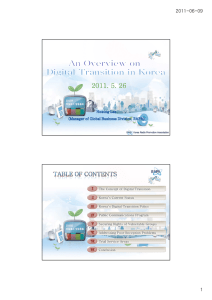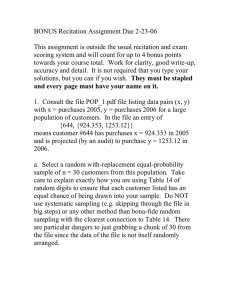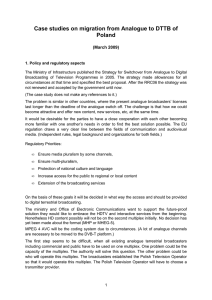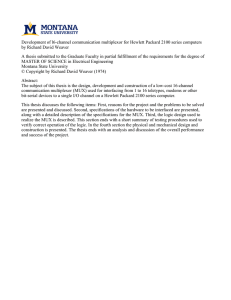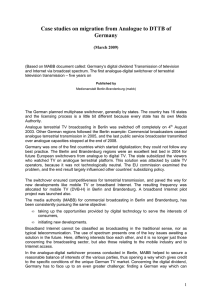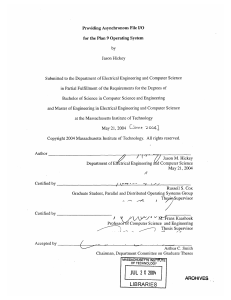DTT-Georgia-and-Media
advertisement
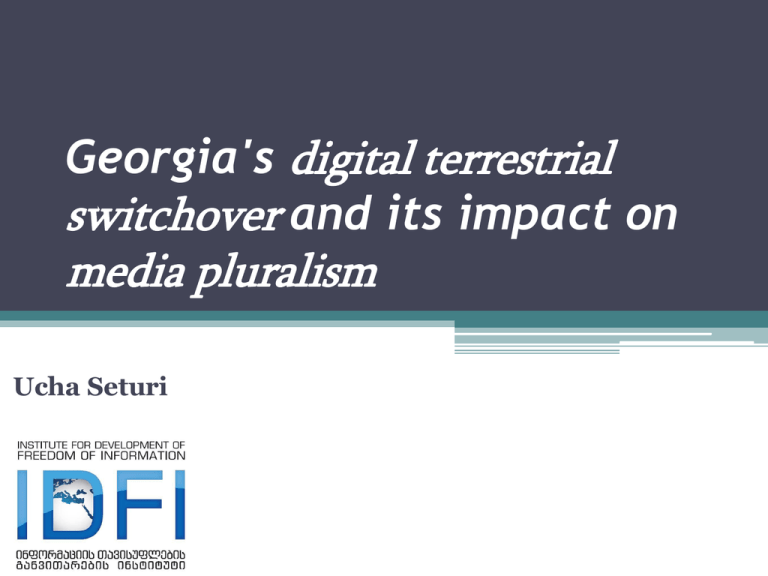
Georgia's digital terrestrial switchover and its impact on media pluralism Ucha Seturi Stakeholders Government • Ministry of Economic Development • Digital Broadcasting Agency • Georgian National Communications Commission Civil Society • IDFI • GARB • OSGF • Media Advocacy Coalition • Donors What we had in December 2012? • No strategy, nor clear vision or goals, no action plan • 2.5 years time period to digital switchover • radio frequencies plan • Small advertisement market • Low incomes of the population • Risks of political and commercial influence over the process of digitalization How about good points for startup? • Civil society was ready to play a role in digital transition • "honeymoon" period with the new government • Over 50% of the population was a consumer of terrestrial broadcasting • Donors and International Organizations were ready to support digital switch over • Lessons learned from positive or negative experience of other countries • legal framework harmonized with EU regulations Government model vs. civil society model Government model Civil Society model Digital infrastructure built, owned and operated by the state Estimated spending from the State Budget 80 M GEL No private investments in infrastructure Survival risk for small regional broadcasters Subsidies to socially vulnerable population to purchase set top boxes Private companies build, own and operate digital infrastructure No state investment in infrastructure Open and transparent tender to select MUX operators Free broadcasting licenses for small regional broadcasters Subsidies to socially vulnerable population to purchase set top boxes Business Model 1 PRIVATE MUX OPERATORS 2 ACCESS FEES 3 MUX OPERATOR DUTIES ONLY PSB MUX WITH STATE FUNDING (4.5 M $) PRIVATE INVESTMENT (UP TO 10 M $) PRIVATE NATIONAL and LOCAL 22 MUXes 8900 GEL (4000 $) PER ONE mgbit/s per month 22000 GEL (8000$) PER SD CHANNEL TRANSPARENCY (RO) ACCESS NONDISCRIMINATION COST ACCOUNTING 4 Digital Dividend Extra Internet access for Population Media Market after Digital Switch Over ANALOG • 5 nationwide channels • 27 Regional channels • NO CAPACITY FOR NEW ENTRANCE DIGITAL • Up to 30 Nationwide channels • Over 20 regional channels • 15 nationwide channels • 15 nationwide PAY-TV channels • Up to 80-100 regional channels • EXTRA 2 NATIONWIDE MUXes Overall Assessment of Digital Transition in Georgia • Very slow process of digital switch over was intensified in 2014-15. Georgia started to switch off the analog signal in June, 2015 and ended the process in August, 2015. • Regional broadcasters have already built 19 small MUXes all over the country. • Access fee to digital infrastructure is reasonable and affordable. • 450000 set top boxes are on the market, 220000 subsidized by the government for socially vulnerable population. • Broadcasting license is no more needed. Broadcasters go through a simplified procedures of authorization instead. • Existing infrastructure allows access for new TV channels, studios, contentproviders • More legal work to be done on specific regulations to secure broadcaster’s access to MUX: financial, technical and legal conditions. • Digital transition in Georgia is successful, secures media freedom, ensures media pluralism and creates opportunities for emerging content-producers THANK YOU Is it a “heaven” for media outlets? QUESTIONS? Ucha Seturi
